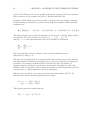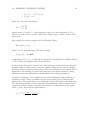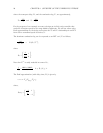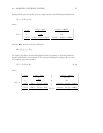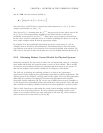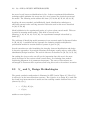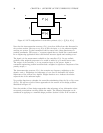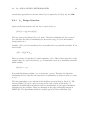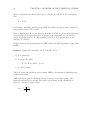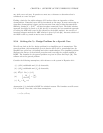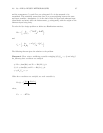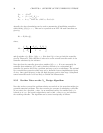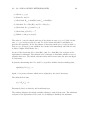
32 CHAPTER 2. OVERVIEW OF THE UNDERLYING THEORY
2.3.2 Assumptions for the H
∞
Design Problem
There are several assumptions required in order to achieve a well-posed design problem.
The DGKF paper gives a state-space solution to the H
∞
design problem and we will use
a similar notation here.
Consider the open loop state-space representation of P(s), partitioned according to the
signals shown in Figure 2.7,
P(s)=
A
B
1
B
2
C
1
C
2
D
11
D
12
D
21
D
22
. (2.11)
We will assume that P(s) is a minimal representation. The following assumptions are
required for a well-posed problem.
(i)(A, B
2
) is stabilizable and (C
2
,A) is detectable;
(ii) D
12
and D
21
are full rank;
(iii) The matrix,
A − ωI B
2
C
1
D
12
,
has full column rank for all ω ∈R;
(iv) The matrix,
A − ωI B
1
C
2
D
21
,
has full row rank for all ω ∈R.
Item (i) is required so that input-output stability is equivalent to internal stability. If it
is not satisfied then there are unstable modes which cannot be stabilized by any K(s).
Items (ii)and(iii) mean that, at every frequency, there is no component of the output
signal, e, that cannot be influenced by the controller. Similarly, items (ii)and(iv)mean



